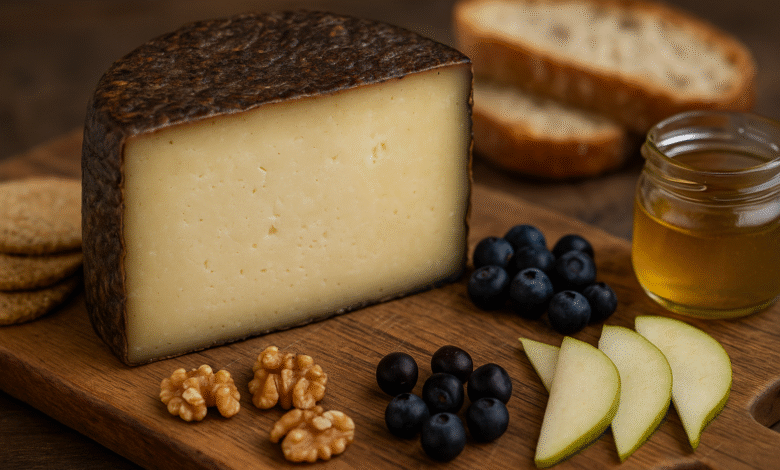Grouse Cheese: A Rare Taste of the Wild for Gourmet Lovers

If you’ve ever admired a luxurious cheese board filled with the usual bries, cheddars, and goudas, you may have wondered what could truly set one platter apart from the rest. Enter grouse cheese – a little-known, artisanal treasure that is winning the hearts of adventurous food lovers and gourmets across the world. Complex, earthy, and unlike anything you’ve ever tasted, this cheese captures the very essence of wilderness and tradition.
In this article, we’ll explore what grouse cheese really is, how it’s made, why it’s so unique, where to find it, and how best to enjoy it.
What Is Grouse Cheese?
The name “grouse cheese” can be misleading. Despite its title, it is not made from milk produced by grouse birds. Instead, the name comes from the inspiration cheesemakers draw from the grouse’s natural habitat. Grouse birds thrive in moorlands and forested areas across Scotland, Scandinavia, Northern Europe, and parts of North America. Cheesemakers in these regions craft cheeses using milk from cows, goats, or sheep, but infuse the flavors of the wild landscapes where grouse live.
The Core Idea Behind Grouse Cheese
-
Milk Base: Produced from cow’s, goat’s, or sheep’s milk, or a combination.
-
Wild Additions: Infused with botanicals and plants that grouse themselves feed on, such as juniper berries, heather flowers, bog myrtle, wild mushrooms, or blaeberries (bilberries).
-
Smoking Methods: Many producers smoke the cheese over native woods like birch or pine, intensifying the earthy and smoky qualities.
-
Seasonal Production: Some cheesemakers align production with grouse hunting seasons or the availability of certain foraged ingredients.
The outcome is a cheese that feels like a direct connection to nature – wild, herbal, smoky, and rich with personality.
Why Grouse Cheese Is So Special
Unlike mass-produced cheeses that focus on uniform flavor, grouse cheese embraces diversity, terroir, and a sense of place. Each wheel tells its own story, reflecting the land it comes from.
-
Layered Flavors: From smoky undertones to piney sharpness, floral heather notes, and earthy mushroom depth, grouse cheese delivers a unique and evolving flavor experience.
-
Artisanal Craftsmanship: Small producers, especially in Scotland and Scandinavia, work with traditional smoking techniques and foraged ingredients that create cheeses of extraordinary quality.
-
Rare and Exclusive: Finding genuine grouse cheese is like striking gold. Limited production means it’s often available only in select specialty shops or high-end markets.
-
A Conversation Starter: Place grouse cheese on a cheeseboard, and it becomes the centerpiece. Its story and taste spark curiosity and admiration at any gathering.
Where to Find Grouse Cheese
If you’re ready to try this rare delicacy, here’s where to look:
-
Specialty Cheese Shops: Cheesemongers who specialize in British, Scandinavian, or small-batch artisanal cheeses may carry grouse cheese or similar varieties.
-
Farmers’ Markets: In regions near grouse habitats, artisan cheesemakers occasionally sell directly at premium markets.
-
Online Gourmet Stores: Many online retailers now stock unique cheeses, so searching for “heather cheese,” “wild smoked cheese,” or specifically “grouse cheese” may lead you to authentic suppliers.
Also read: Çeciir: A Nutrient-Rich Legacy of Turkish Culinary Tradition
How to Serve Grouse Cheese
Enjoying grouse cheese is all about letting its complexity shine. Here are a few tips:
-
Room Temperature Matters: Remove it from the fridge 1–2 hours before serving. This allows the aroma and texture to fully develop.
-
Best Accompaniments:
-
Neutral bases like oatcakes, rye crisps, or sourdough bread.
-
Sweet contrasts such as heather honey, blaeberry jam, or fig paste.
-
Fresh fruits like pears and apples, or dried fruits like apricots.
-
Nuts such as hazelnuts and walnuts to echo its earthy tones.
-
-
Drink Pairings: Pair with smoky single malt whisky (especially Islay varieties), malty ales, a structured Pinot Noir, or even craft ciders with complexity.
Flavor Pairing Guide
| Flavor Profile | Perfect Pairings | Avoid |
|---|---|---|
| Heather-forward | Heather honey, oatcakes, light cider | Overly sweet jams, heavy beers |
| Smoky/Juniper | Smoked whisky, walnuts, rye bread | Delicate white wines |
| Earthy/Mushroom | Pinot Noir, dried figs, sourdough | Citrus fruits, sharp cheeses |
| Berry-infused | Blaeberry jam, dark chocolate, almonds | Bitter greens, vinegar sauces |
Why Grouse Cheese Matters
Beyond being a delicious treat, grouse cheese represents something much larger:
-
Celebrating Terroir: It redefines terroir in cheesemaking by focusing not only on the milk but also on the surrounding landscape and botanicals.
-
Preserving Tradition: Smoking techniques and foraging knowledge used in grouse cheese production often date back generations.
-
Sustainability: By using locally sourced, wild ingredients, producers encourage biodiversity and responsible land management.
-
Culinary Adventure: For modern food lovers, grouse cheese satisfies a growing demand for authentic, story-driven, and one-of-a-kind flavors.
Starting Your Grouse Cheese Journey
If you’re curious about tasting grouse cheese, here are three simple steps:
-
Ask Your Cheesemonger: At your local specialty shop, mention grouse moors, heather, or juniper flavors – they might have something similar even if not labeled “grouse cheese.”
-
Sample Slowly: Buy a small piece and savor it plain first before experimenting with pairings.
-
Share the Experience: Grouse cheese is about stories as much as flavors – share both with your friends and family.
FAQs on Grouse Cheese
1. Is grouse cheese made from grouse milk?
No. Grouse cheese is made from cow, goat, or sheep milk. The name refers to the wild ingredients and techniques inspired by the habitats of grouse birds.
2. What does grouse cheese taste like?
Expect layers of smokiness, herbal heather, earthy mushrooms, tart wild berries, and a creamy or crumbly base. The flavors are bold, wild, and distinctive.
3. Why is grouse cheese so expensive?
It’s rare, made in small batches, and often includes seasonal foraged ingredients and labor-intensive smoking and aging processes.
4. Where can I buy grouse cheese?
Look for it in specialty cheese shops, gourmet online retailers, or high-quality farmers’ markets near grouse habitats (like Scotland or Scandinavia).
5. How should I serve grouse cheese?
Bring it to room temperature, pair with neutral breads or oatcakes, sweet fruits, nuts, and drinks like smoky whisky or Pinot Noir.
6. Is grouse cheese vegetarian?
It depends on the rennet used. Some producers use animal rennet, while others use vegetarian alternatives. Always check labels.
7. Can I make a version of grouse cheese at home?
While aged versions are difficult to replicate, you can mimic its flavors by blending soft cheese with dried heather, crushed juniper, or lightly smoking firm cheeses like cheddar over birch chips.
Read also: Understanding b01lwq8xa9: Why It Matters and How It Works



